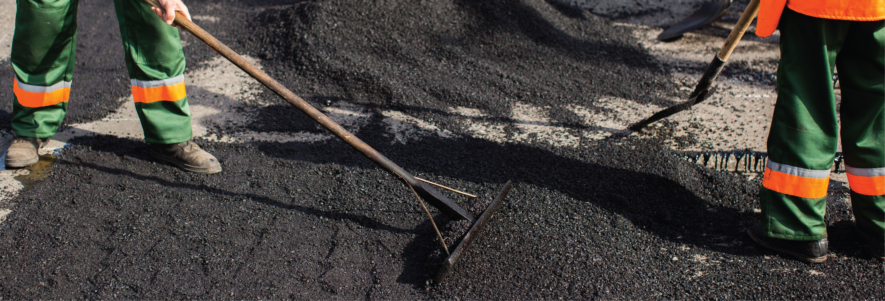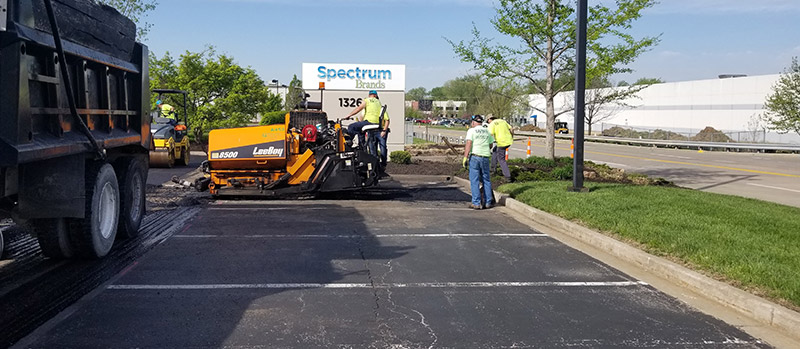The 7-Minute Rule for A1 Professional Asphalt & Sealing Llc
The Ultimate Guide To A1 Professional Asphalt & Sealing Llc
Table of ContentsThe Greatest Guide To A1 Professional Asphalt & Sealing LlcThe smart Trick of A1 Professional Asphalt & Sealing Llc That Nobody is DiscussingThe Greatest Guide To A1 Professional Asphalt & Sealing LlcThe Ultimate Guide To A1 Professional Asphalt & Sealing LlcA1 Professional Asphalt & Sealing Llc for Beginners

The oil in a cars and truck engine is not just oil. The REOB consists of all the additives that were in the waste oil as well as the wear metals from the engine (mainly iron and copper).
By making lots of blends making use of different REOB samples and different asphalt binders, the variations mainly can be balanced out. Numerous States provided samples of known REOB structure to TFHRC researchers, who assessed the examples to contrast the percent of included (recognized) REOB to the found (checked) quantity. The evaluations revealed a similar percent of included and discovered REOB.
The Of A1 Professional Asphalt & Sealing Llc
They received a frustrating feedback. The TFHRC researchers analyzed 1,532 examples from 40 States, one Canadian district, and two Government Lands Highway divisions. They assessed each example twiceamounting to greater than 3,000 evaluations. None of those States recognized that the asphalt they were buying had REOB. One State insisted its examples had no REOB.
Of the 1,532 examples evaluated, 12 percent included REOB, and some contained appreciably high degrees of it at 1020 percent. The highest degree was 34 percent in an example from Texas, which TxDOT had used in a patching substance. This testing also exposed the presence of phosphoric acid in 11 percent of the examples, and 2 percent included ground tire rubber.
Two years earlier at TRB's annual conference, the Federal scientists held an REOB workshop and presented the searchings for of their lab assessments to a standing room-only group. Some companies do not specifically outlaw REOB, they do impose physical examinations that preclude its useeffectively a ban. Others do not outlaw it by spec, yet have contracts with asphalt suppliers to prevent making use of REOB
A1 Professional Asphalt & Sealing Llc Fundamentals Explained
A handful do permit REOB, some within certain limits. For instance, Ohio and Texas restriction degrees to much less than 5 percent of the asphalt. To develop a trustworthy examination approach that all States can make use of, the TFHRC scientists established up a round-robin test plan. The participants are 11 State highway companies (Illinois, Massachusetts, Minnesota, Mississippi, Montana, North Carolina, Oklahoma, South Carolina, Texas, Vermont, and Wyoming), 2 independent screening laboratories, the Ministry of Transport in Ontario, Queen's University in Ontario, and an Ontario paving specialist.
In total amount, the scientists prepared and delivered 720 blends. The individuals are examining the examples separately utilizing the guidelines offered by the TFHRC researchers. The round-robin testing is nearly finished, and TFHRC remains in the procedure of accumulating the outcomes. The outcome will be a proposed AASHTO examination approach that any type of State can adopt and use (a1 asphalt).
The sidewalk with REOB, which is located 0.6 mile (1 kilometer) from the pavement without REOB, has the same subgrade, web traffic density, and climate. The sector of Highway655 with 5 to 10 percent REOB showed considerable cracking. In this instance, the presence of REOB was the determined root cause of splitting at a low temperature levels.
"In our experience in Canada, also little quantities of 23 percent can be a problem." Similarly, a section of examination pavement in Minnesota (MN1-4) located to include REOB additionally split too soon. The pavement executed well for the first 3 to 4 years, however after that started to split. This sidewalk is also subject to low temperature levels.
How A1 Professional Asphalt & Sealing Llc can Save You Time, Stress, and Money.
The tests were not substantial, but they showed that at levels of 6 percent or more, the tensile toughness of the asphalt dropped considerably. At a level of 3.5 percent REOB, the variant in the physical test techniques was more than the impact of REOB. It was hard for scientists to analyze whether REOB was present. https://a1asphaltseal.bandcamp.com/album/a1-professional-asphalt-sealing-llc.

One binder specification thought about is the distinction in between the low temperature critical requirements temperature level for stiffness (S) in the bending light beam rheometer and the bending light beam rheometer creep incline (m-value) kept in mind as Tcritical. TC = TC (S) TC (m-value). Analysis of this criterion is still recurring. 2 independent research teams, one from AASHTO and the various other from the look at here Asphalt Institute, ended that more study is required on the usage of REOB in asphalt.
Formerly, all asphalt testing determined design residential or commercial properties such as tightness. These examinations do not show what materials had actually been added to the asphalt. One example gotten throughout the TFHRC research study had a very weird analysis. The example had the complying with test outcomes: Superpave PG 64-28 with a high temperature grade of 67.3 Tcritical on the flexing beam of light rheometer was 6.7 levels Celsius.

A1 Professional Asphalt & Sealing Llc Things To Know Before You Get This
These results demonstrate there are weak points in the standard design testing methods that might be made use of. The manufacturer may have an economic advantage and the item passes all the standard tests, but the product might not be beneficial to ensuring lasting efficiency. To address this issue and the expansion of brand-new asphalt additives and extenders, TFHRC is beginning a study program to use handheld spectroscopic tools, x-ray fluorescence spectroscopy, and Fourier change infrared spectroscopy to allow analyses to be carried out in the field as opposed to needing to take samples back to the lab.